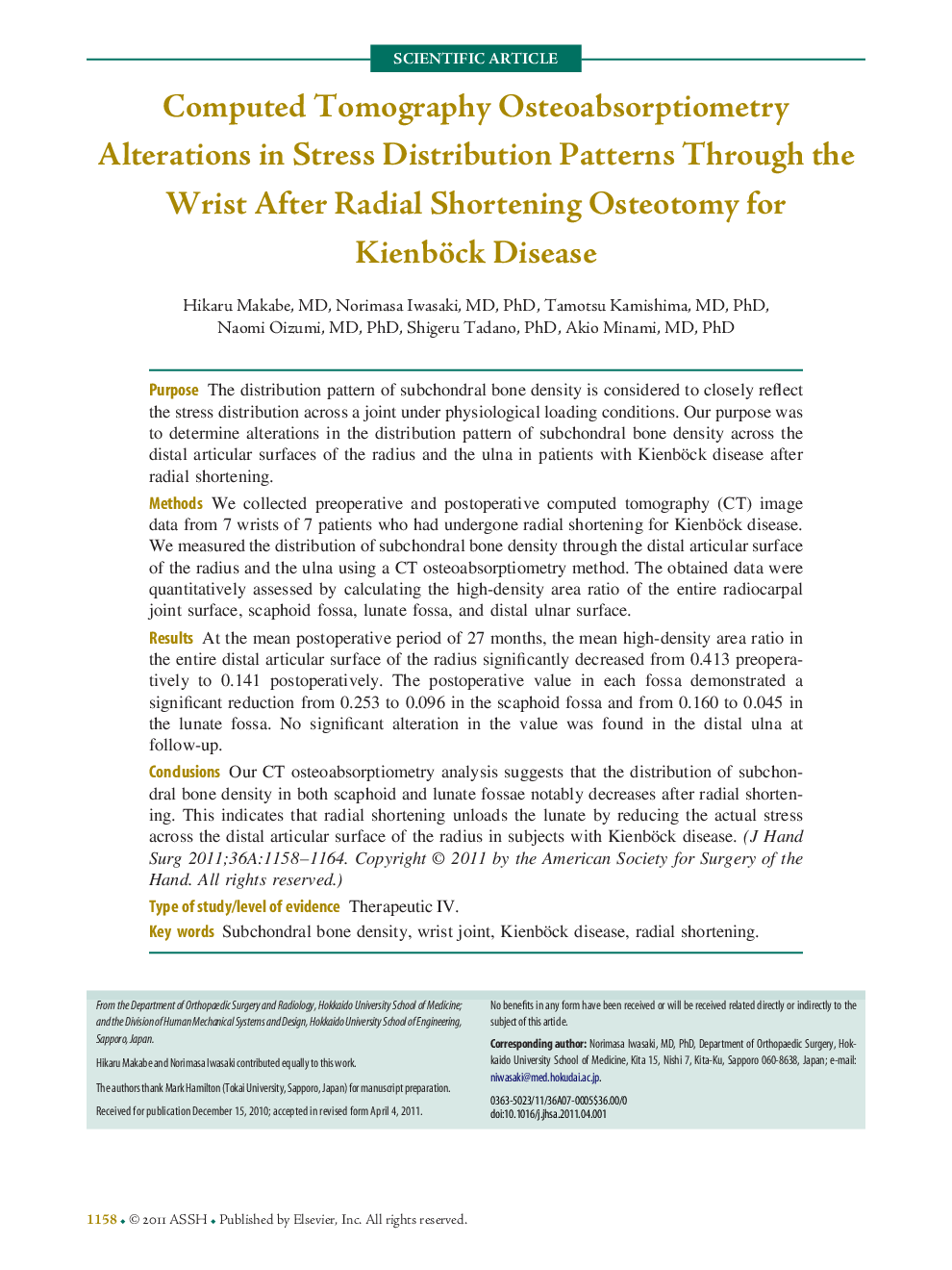| Article ID | Journal | Published Year | Pages | File Type |
|---|---|---|---|---|
| 4069476 | The Journal of Hand Surgery | 2011 | 7 Pages |
PurposeThe distribution pattern of subchondral bone density is considered to closely reflect the stress distribution across a joint under physiological loading conditions. Our purpose was to determine alterations in the distribution pattern of subchondral bone density across the distal articular surfaces of the radius and the ulna in patients with Kienböck disease after radial shortening.MethodsWe collected preoperative and postoperative computed tomography (CT) image data from 7 wrists of 7 patients who had undergone radial shortening for Kienböck disease. We measured the distribution of subchondral bone density through the distal articular surface of the radius and the ulna using a CT osteoabsorptiometry method. The obtained data were quantitatively assessed by calculating the high-density area ratio of the entire radiocarpal joint surface, scaphoid fossa, lunate fossa, and distal ulnar surface.ResultsAt the mean postoperative period of 27 months, the mean high-density area ratio in the entire distal articular surface of the radius significantly decreased from 0.413 preoperatively to 0.141 postoperatively. The postoperative value in each fossa demonstrated a significant reduction from 0.253 to 0.096 in the scaphoid fossa and from 0.160 to 0.045 in the lunate fossa. No significant alteration in the value was found in the distal ulna at follow-up.ConclusionsOur CT osteoabsorptiometry analysis suggests that the distribution of subchondral bone density in both scaphoid and lunate fossae notably decreases after radial shortening. This indicates that radial shortening unloads the lunate by reducing the actual stress across the distal articular surface of the radius in subjects with Kienböck disease.Type of study/level of evidenceTherapeutic IV.
